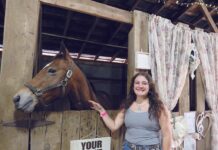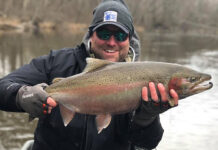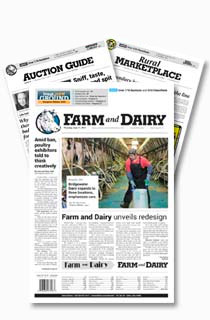One of the jobs I always enjoyed as a game protector for the Division of Wildlife was placing and maintaining wood duck nesting boxes. Some were made of wood while many were constructed from what appeared to be old fiberglass water softener tanks or boating buoys.
While pounding posts and lugging the boxes was some work, my favorite times were inspecting them to help gauge nesting success. This involved either canoeing or wading out and counting the egg shell fragments and membranes after the young had hatched and jumped from their perch.
Once getting to the nest-box, I learned quickly that it’s best to give it a knock or to peek inside before sticking a hand into it. This avoided the surprise of finding critters that had found a convenient sanctuary.
Of course, I learned this only after grabbing a rather large, irritated black snake. I’m really not afraid of snakes — just surprises that involve snakes.
While this late spring, early summer job was fun, I enjoyed cleaning and bedding them the most. This housekeeping was best done in mid-winter while a solid layer of ice topped the ponds. This made for easier and quicker access, maintenance and simpler box installation. While faster, you won’t want to lose your grip on the spud board when pounding holes for the posts or testing the ice … just take my word for it.
While I often did this job solo, sometimes a friend or my wife, Colleen, would tag along. The ideal days were calm and sunny with temperatures below freezing and a layer of snow decorating the landscape. The ice would be solid and the walk noiseless, and if the snowfall was fresh, you could check out the newest tracks of resident wildlife.
Winter encounters

This silent travel often led to encounters with a variety of those critters. Muskrats would sit on the ice near open holes to groom their rich, chocolate fur, an occasional red fox or mink would be seen padding along a bank line, deer would curiously monitor my progress from a distance and the scolding tone of blue jays would always announce my intrusions.
Even in winter, the wood duck box could hold a surprise. While the little tree ducks had long since winged south for the winter, other birds found the nests to be ideal for escaping the harsh weather. The most common encounters were with eastern screech owls.
The owls would sit docilely as I reached in and picked them up in one hand. Their normally wide eyes would squint into tiny slits as they avoided the bright snow-driven sunshine as they seemed to become entranced.
While gently holding the bird in one hand, I would clean and add fresh sawdust bedding to the box and then return the little owl to its quarters.
A few would fly out in a confused zig-zag escape but most just appeared happy to be back inside their temporary home while holding themselves in an upright “frozen” position. Evidence of the birds was even found in vacant boxes with caches of dead mice laying inside.
It wasn’t unusual to find both of the screech owl’s color phases living in close proximity. There was the reddish-brown that biologists and bird watchers like to call rufous and the gray phase. These two color deviations are termed dichromatic.
During the year, the little owl’s diet consists of mainly mice and large insects, but they’ll also feed on other small mammals, reptiles, amphibians and birds. The song is a haunting, trembling wail — a soft trill that invokes the primeval. Even so, they’re often found nesting in larger trees inside urbanized areas, including Findlay.
Screech owl nesting boxes can be constructed and placed in appropriate areas to encourage these worthwhile bug and rodent exterminators to take up residence. However, note that nesting screech owls can become protective of their nests and have been known to dive bomb cats, dogs and people in attempts to scare away intruders. While these feints can be unnerving, they’re harmless.
For free downloadable and print-ready box plans for screech owls, wood ducks and many other species, go to dam.assets.ohio.gov/image/upload/ohiodnr.gov/documents/wildlife/backyard-wildlife/Nest%20Box%20Plans%20pub419.pdf.
For other great sources with additional placement information, visit Ducks Unlimited’s website at ducks.org/conservation/waterfowl-research-science/build-a-wood-duck-box.
“Like the resource it seeks to protect, wildlife conservation must be dynamic, changing as conditions change, seeking always to become more effective.”
— Rachel Carson













